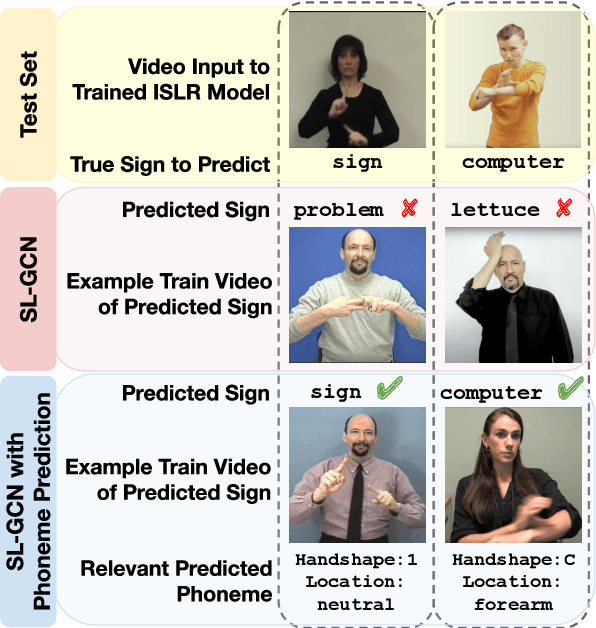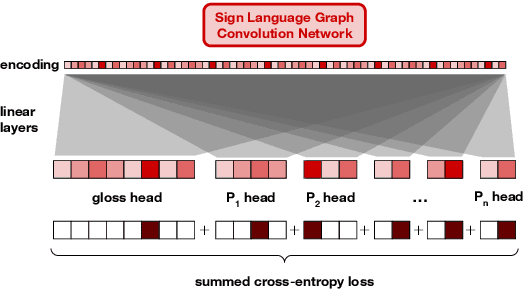Zed Sevcikova Sehyr
The Sem-Lex Benchmark: Modeling ASL Signs and Their Phonemes
Sep 30, 2023Abstract:Sign language recognition and translation technologies have the potential to increase access and inclusion of deaf signing communities, but research progress is bottlenecked by a lack of representative data. We introduce a new resource for American Sign Language (ASL) modeling, the Sem-Lex Benchmark. The Benchmark is the current largest of its kind, consisting of over 84k videos of isolated sign productions from deaf ASL signers who gave informed consent and received compensation. Human experts aligned these videos with other sign language resources including ASL-LEX, SignBank, and ASL Citizen, enabling useful expansions for sign and phonological feature recognition. We present a suite of experiments which make use of the linguistic information in ASL-LEX, evaluating the practicality and fairness of the Sem-Lex Benchmark for isolated sign recognition (ISR). We use an SL-GCN model to show that the phonological features are recognizable with 85% accuracy, and that they are effective as an auxiliary target to ISR. Learning to recognize phonological features alongside gloss results in a 6% improvement for few-shot ISR accuracy and a 2% improvement for ISR accuracy overall. Instructions for downloading the data can be found at https://github.com/leekezar/SemLex.
Improving Sign Recognition with Phonology
Feb 11, 2023



Abstract:We use insights from research on American Sign Language (ASL) phonology to train models for isolated sign language recognition (ISLR), a step towards automatic sign language understanding. Our key insight is to explicitly recognize the role of phonology in sign production to achieve more accurate ISLR than existing work which does not consider sign language phonology. We train ISLR models that take in pose estimations of a signer producing a single sign to predict not only the sign but additionally its phonological characteristics, such as the handshape. These auxiliary predictions lead to a nearly 9% absolute gain in sign recognition accuracy on the WLASL benchmark, with consistent improvements in ISLR regardless of the underlying prediction model architecture. This work has the potential to accelerate linguistic research in the domain of signed languages and reduce communication barriers between deaf and hearing people.
 Add to Chrome
Add to Chrome Add to Firefox
Add to Firefox Add to Edge
Add to Edge